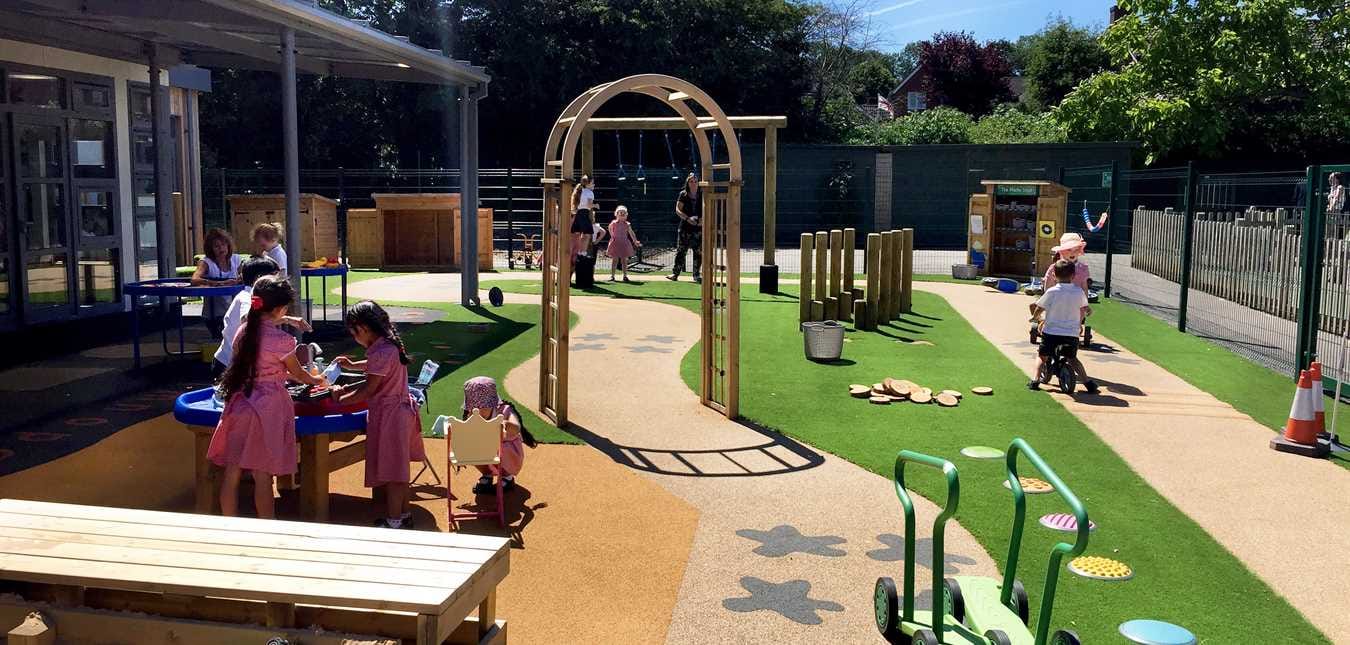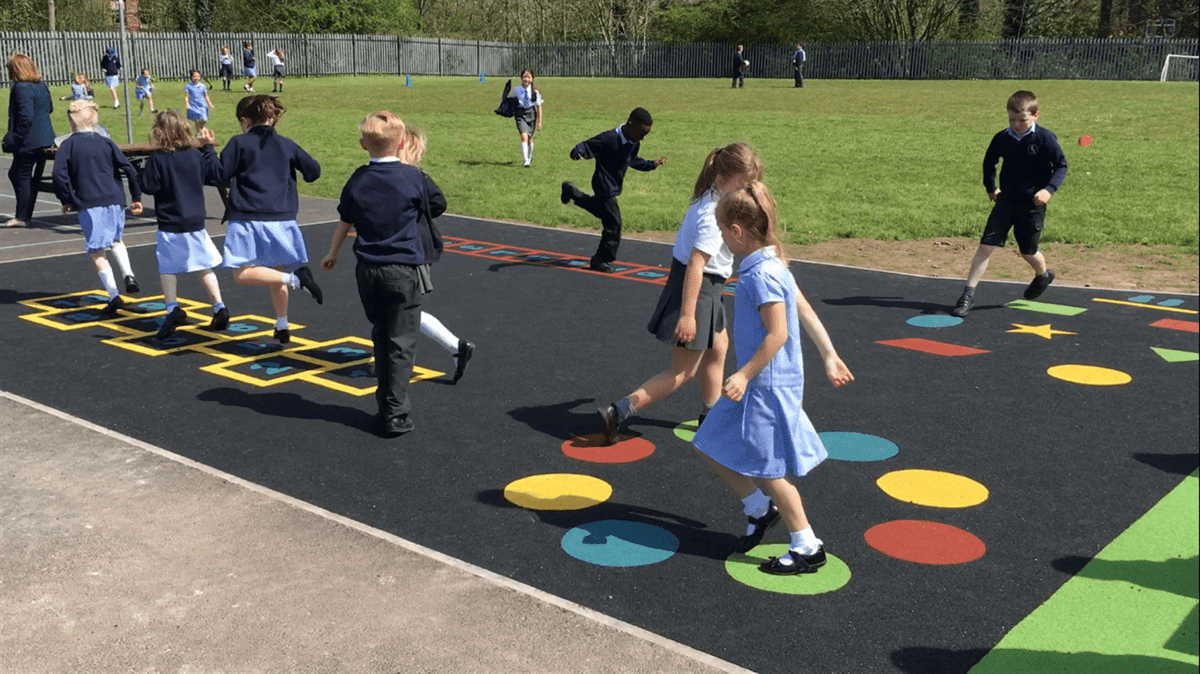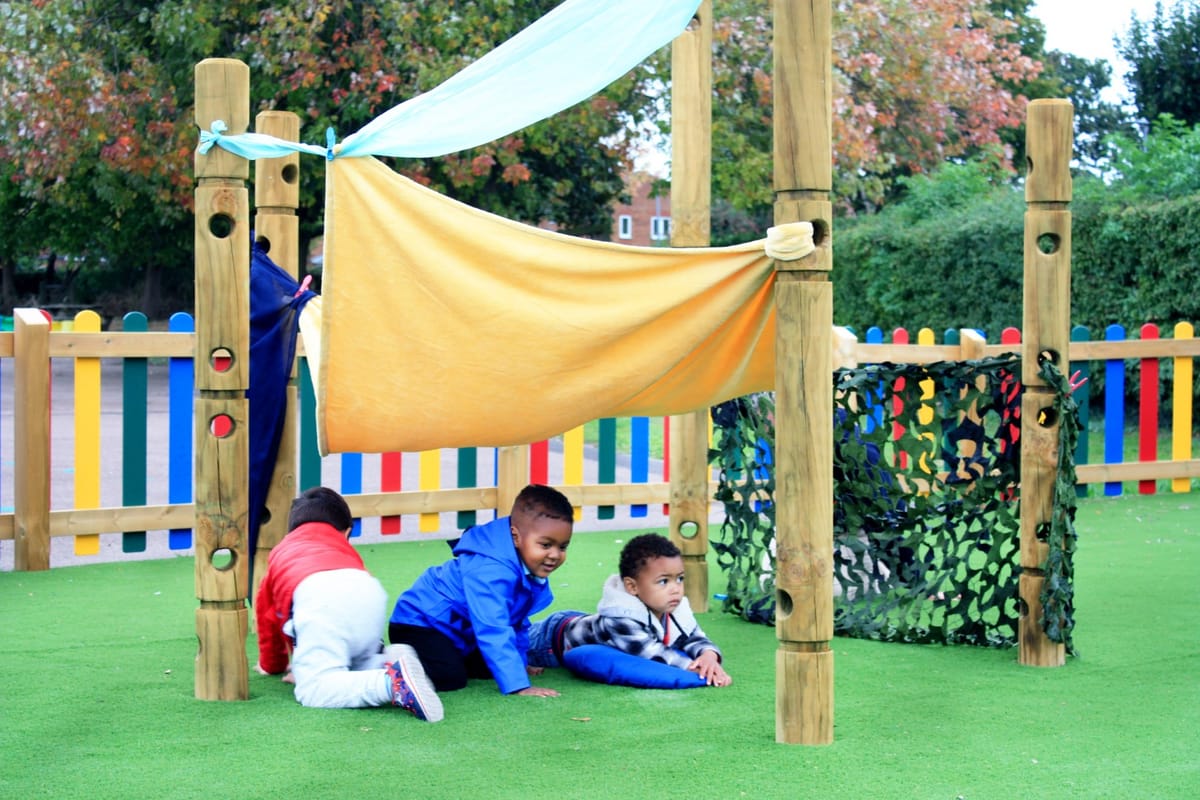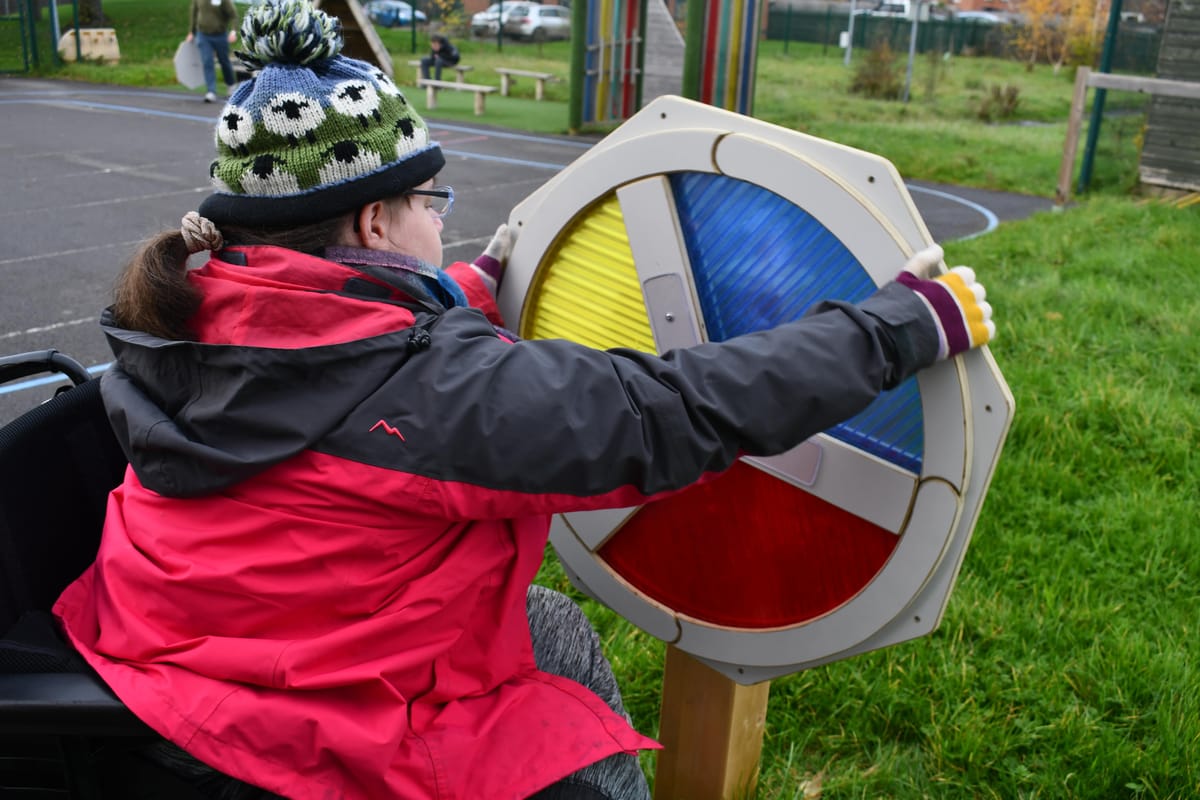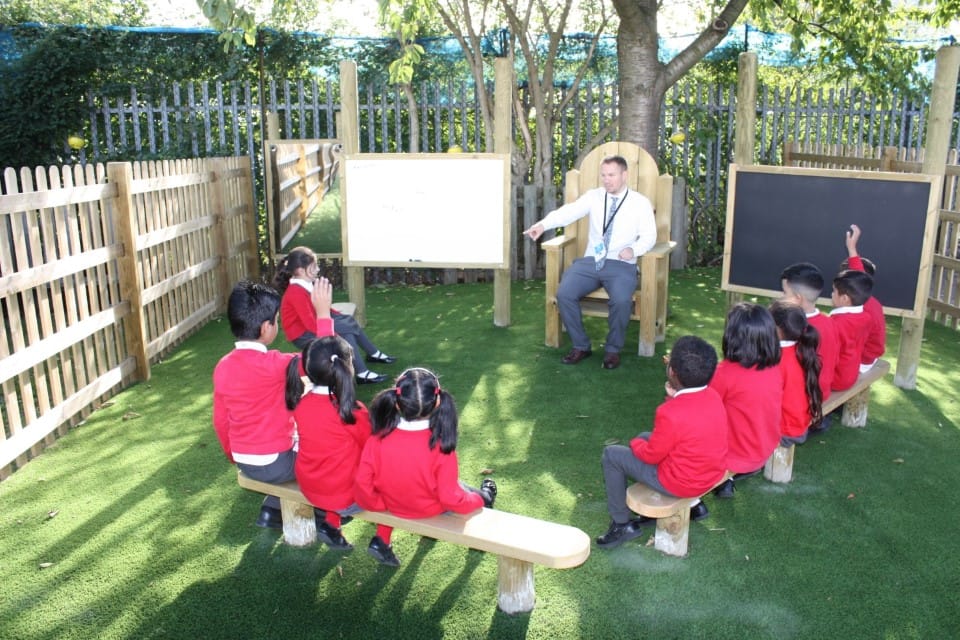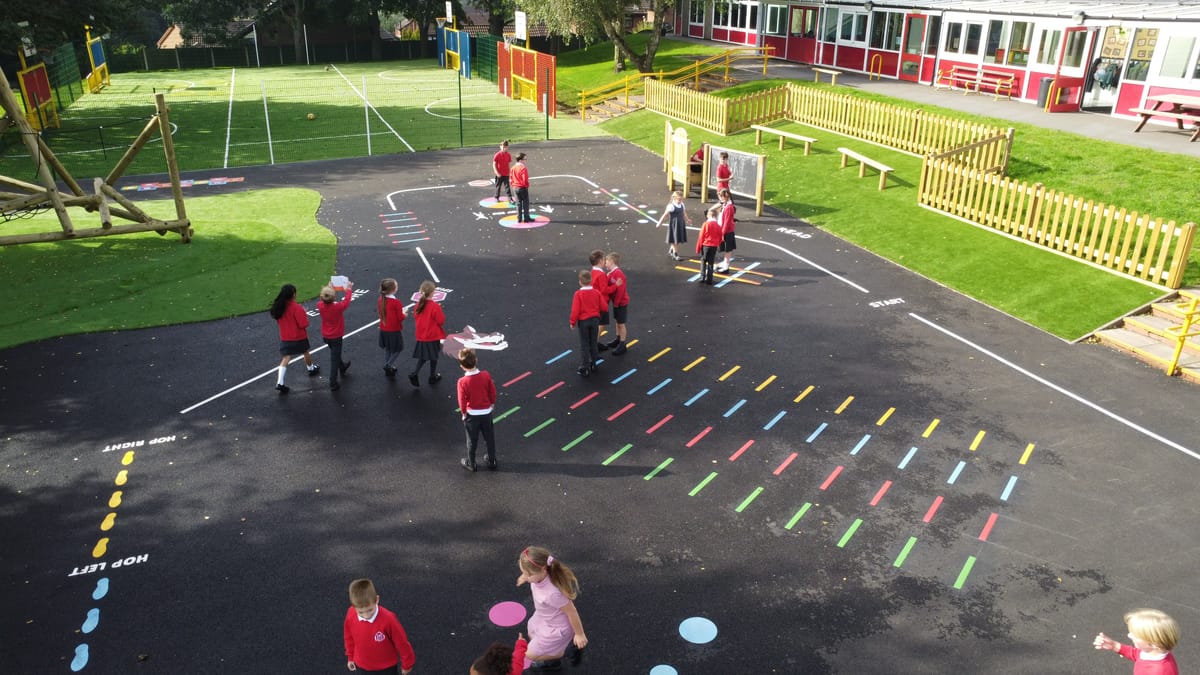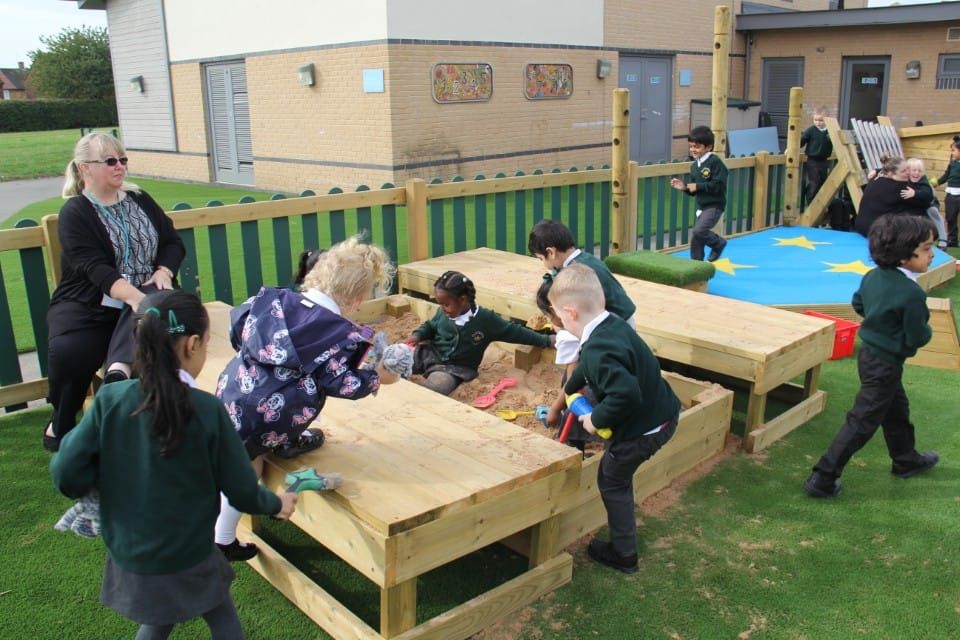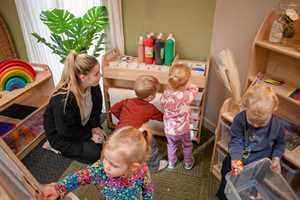
Lesson Ideas and Activities
Top 7 Inclusive Playground Activities for All Kids!
Physical play is an essential part of the school day in all primary schools across the UK - it’s what helps children to stay fit and healthy, to develop physically as well as cognitively, to build social and communication skills and foster friendships, and ultimately to be happy young people that continue to flourish!
However, physical play in schools doesn’t come without its challenges, and not every child finds it that easy to join in. Whether due to physical disabilities, social anxiety, neurodivergence, or cultural and gender-based barriers, for too long it has too often been the case that some children are simply left out of the fun.
This should never be the case, and nor does it have to be. All schools have an important role in ensuring that play is inclusive, accessible, and enjoyable for all - and this is where we can offer some of our very best support!
We know just how much physical activity and playground fun can have a hugely positive impact on children's physical and mental health and wellbeing - as well as helping them to develop important life skills, such as resilience through safe risk-taking.
Here at Pentagon, we are proud to have worked with thousands of wonderful primary schools across the country, helping them to create wholly inclusive outdoor learning and play environments - and we’ve picked up a plethora of great practical ideas along the way!
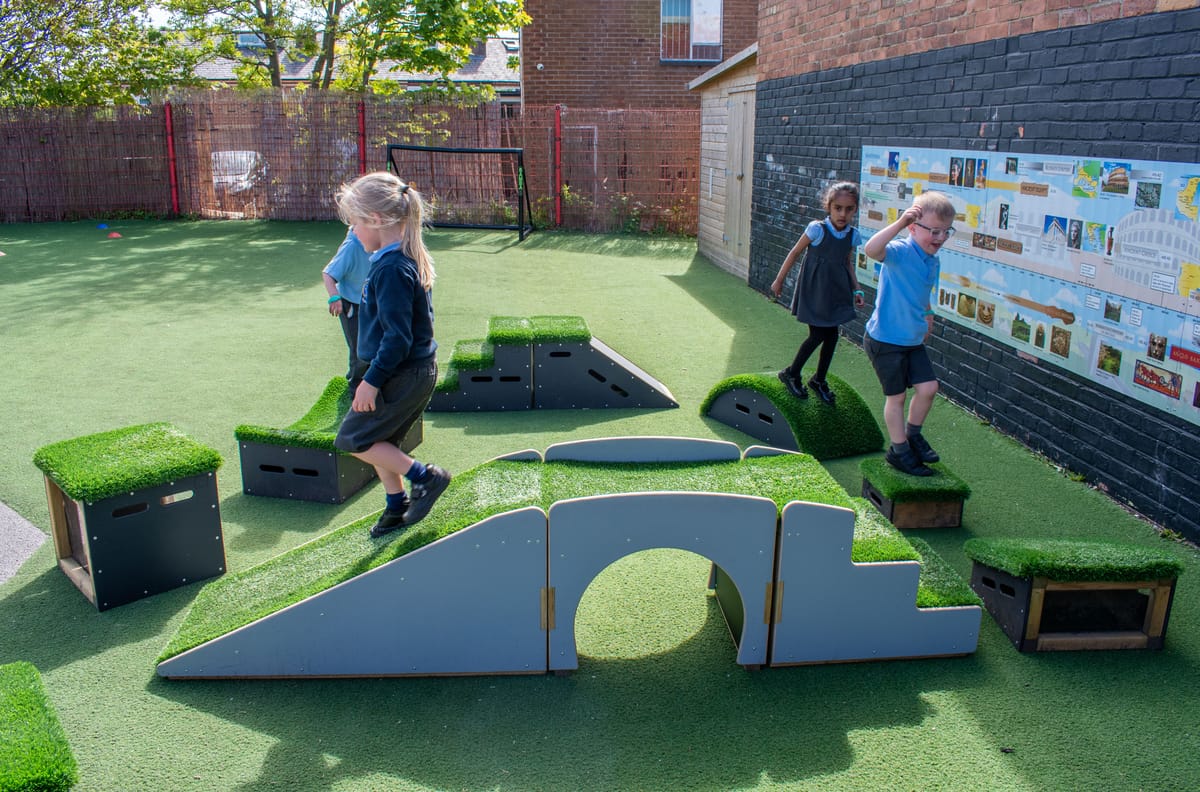
Here we share some practical activity ideas and approaches that promote inclusivity in physical play, suitable for breaktimes, PE lessons, or structured learning-through-play sessions.
Why Does Inclusive Play Matter?
This may seem like a silly question to ask, with a very obvious answer - but it’s important to think about the ‘whys’ as this helps to inform and prepare the ‘hows’. Thoughtfully planned and considered inclusive play promotes:
- Physical development - a fundamental necessity for all children, regardless of age or ability, and particularly important for children with limited mobility or coordination challenges who may need additional support to achieve their physical development goals.
- Social connection for children with and across different abilities and backgrounds - everyone benefits from the power of community.
- Confidence, self-awareness and self-worth - both for children who might otherwise be left out, and for children learning to recognise where others might be struggling, and the importance of helping and including others.
- A greater sense of belonging, where every child feels seen and valued.
- Social education - helping children learn to recognise the value of difference, challenging and breaking down stereotypes, improving attitudes and understanding and addressing issues of inequality.
Perhaps the single most important thing to remember about inclusive play is this: it’s about encouraging and supporting mixed groups where all children can play and participate together, rather than separating children by ability or preferences, which completely defeats the object.
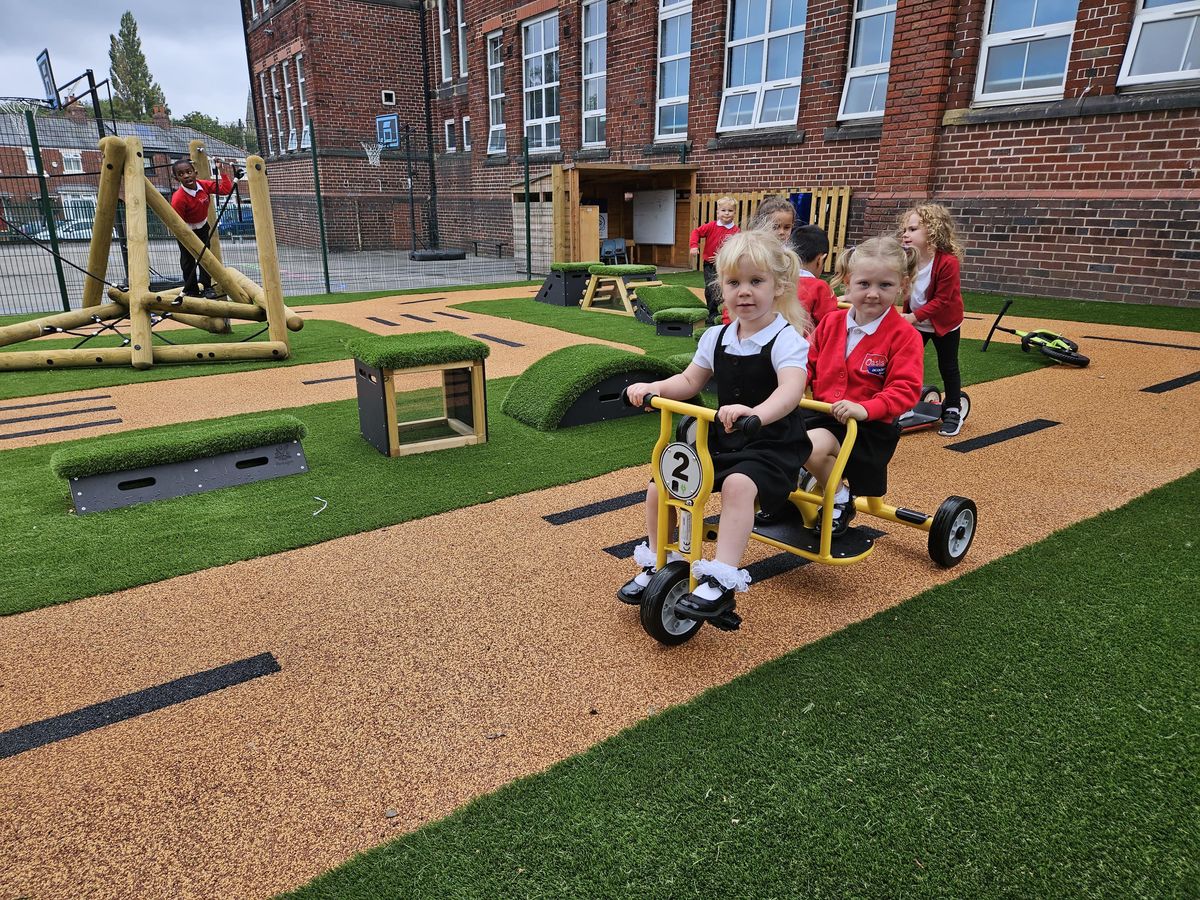
The 5 Guiding Principles of Inclusive Physical Play
When we’re look at formulating the best activity ideas for truly inclusive physical play, it’s best to keep in mind these five key principles that guide inclusive play, and to make sure the activity adheres to them to the greatest extent possible:
- Choice – The best type of play offers choice - this is how children make play their own and get to embrace their natural creativity. Provide a good, balanced variety of different physical play options in the playground, offering activities that are adaptable rather than rigid. Open-ended physical play equipment, for example a flexible playframe or a sensory trim trail with access points at different heights and places, and/or offering different levels of challenge to suit different abilities, allows children to engage in a way that suits them.
See: Our open-ended range of Trim Trails and Playframes to suit different ages and abilities.
- Accessibility – It’s crucial to ensure both physical and sensory access to play equipment, with suitable surfacing to welcome children with mobility issues and/or using wheelchairs, and enough space around and between items for groups of children to move comfortably and safely. Think about minimising overwhelming sensory input and breaking up the playground space into distinct zones for more safe and comfortable use for everyone. Tactile features, contrasting colours and clear pathways can support children with visual impairments in accessing activities.
- Prioritise cooperation over competition – Team-based and cooperative games, rather than ‘winner-takes-all’ activities, promote inclusivity and mutual consideration during physical play.
- Clear structure – Many children, and especially those with SEND, benefit from and feel much better able to participate in activities where there are predictable rules and routines explained at the start - instead of leaving them to try and second-guess what’s coming next and whether they’re going to be able to participate or not.
- Peer support – Implementing buddy systems or enjoying activities in mixed-ability groups will foster and encourage inclusive peer dynamics.
7 Great Inclusive Activity Ideas for Physical Play
Whether you’re looking to boost confidence, encourage teamwork, or simply get everyone moving, these seven inclusive activity ideas are designed to make physical play fun and accessible for all.
Each activity can be easily adapted to suit different needs and abilities, so every child can join in, feel successful, and enjoy being active together. Let’s explore some creative ways to get everyone involved and loving physical play!
1. Take-Your-Pick Activity Stations
What to do: Set up several physical play stations around the playground. They can be really simple but each one should offer a different activity with a different type of challenge using different body movements, such as:
- Throwing bean bags into hoops or buckets
- Walking across a balance beam
- Balancing on a wobble board
- Completing a mini obstacle course (with optional bypass routes)
- Soft/sponge ball bowling
- Throwing a ball into a basketball hoop, bouncing it against a wall and catching it, or kicking a ball into a goal target
- Carrying objects of differing weights from A to B
- Dancing or completing a movement mirror (copy a partner’s moves - this could be face to face, or reflected in a playground mirror, or a series of movements using playground markings as a guide)
Why it's inclusive: The children get to choose activity stations they feel comfortable with - and work their way around stations in order of preference. Provided you have enough activity stations to accommodate a few children at any one time, this won’t be a challenge.

Each task can be easily adapted to accommodate different needs - for example, seated throwing for children with mobility difficulties, working in pairs to carry heavier objects, using handrails on equipment or working together in pairs holding hands for balance challenges.
Tip: Rotate activity stations regularly to keep it fresh and interesting, and involve children in choosing or designing the stations - they often come up with some of the best ideas!
See: The Rockies Agility, Balance and Coordination Set, Get Set, Go! Blocks
2. Parachute Pursuits
What to do: Using a large, colourful parachute (a staple in many primary PE kits but if you don’t have one a large bed sheet or blanket works just fine!) children gather around and hold onto the edges in a circle to play inclusive games, such as:
- “Popping Popcorn” – Gently wave the edges of the parachute by moving their arms up and down, in time or at random, to bounce lightweight balls on the top of it. How high can you make them go without falling off?!
- “Mushrooms” – Lift the parachute up in the air together and let groups take it in turns to crawl, walk, sit or run underneath. You could do this by calling out names, or allocating children the number 1, 2 or 3 etc (depending on your group size), so for example all the ‘3s’ go underneath together and so on.
- “Colour call” – Children swap places under the parachute when their colour is called.
Why it’s inclusive: These games can either be fast paced or they can involve gentle, cooperative movement. There's no "winning" as such - it’s about the opportunity to listen for cues and to try different types of movement to influence the parachute.
Children can engage at their own pace, which is ideal for children who are anxious, autistic, or prefer quieter group activities - and if they don’t want to run underneath it that’s fine too - they can continue to operate the parachute! The parachute itself brings a lovely, gentle sensory element to physical play.
3. Sensory Circuits
What to do: Create a circuit of fun physical activities for children to choose from that stimulate their different senses. These could include:
- Jumping on coloured spots/playground markings, and on/off playground equipment at appropriate heights (proprioception)
- Riding on a swing (vestibular)
- Rolling a soft ball along their arms, and/or along a plotted obstacle course (tactile)
- Riding a wheeled vehicle (scooters, bikes, wheelchairs) around a ‘roadway’ track (balance, proprioception, spatial awareness, coordination)
- Following a ribbon trail, light rope or playground marking trail (visual tracking)
- Pushing a weighted box, pulling a battle rope (deep pressure/heavy work)
- Digging, filling and carrying buckets of sand or water (tactile, deep pressure/heavy work)
Why it’s inclusive: Sensory circuits particularly support children with sensory processing difficulties and are a crucial part of their sensory diet, following guidance from their occupational therapist.
However, regular sensory physical activities can prove to be calming and engaging for all children, helping them to self-regulate and transition calmly into classroom-based learning afterwards.
See: Playground Markings, Mud, Sand and Water Play, Sensory Play Equipment, Kinetic Playground Equipment
4. All-In Team Games
Some traditional team sports and games like football, netball or tag often exclude children who aren’t fast, competitive, or socially confident.

Of course we would never suggest removing or replacing traditional team sports as they hold their own important values - but it’s good to offer some inclusive alternatives as well so that everyone gets to experience the joy and the benefits of team games. You could try:
A. Bench Ball (with adaptations)
- Split your group into two teams. Set up a halfway line on your ‘court’ with a bench or mat at each end and teams waiting, standing still in their own half of the court. Have one player from each team be the ‘target player’ standing or sitting on the mat or bench in the opposing team’s half.
- The aim is for teams to throw a soft ball for their teammate target player to catch.
- Once the target player catches the ball on the bench, either the person who threw it, or another team member that can be nominated, joins the bench team and also becomes a target player, until all players are on the benches.
- Flip a coin to start. Only the team with the ball can move players into the other team’s half, which ensures that children are safe in their own half and not overrun.
- Children can’t move when they’re holding the ball, but teammates can move into new spaces to increase their chance of scoring.
- When a child moves onto the bench, the ball is passed to the team that has just conceded and play begins again.
- Try using different sized balls and allow walking or rolling throws.
B. Treasure Hunt Relay
- Scatter items around the playground e.g. coloured beanbags, soft balls, small plastic cones. This could be on the ground only, or at different heights on playground equipment if you want to include some climbing challenges.
- Teams should retrieve one item at a time and return it to their base until all items have been found.
- Use visual prompts (e.g. colour cards) for non-readers or EAL pupils.
Why they’re inclusive: Focus is on participation rather than speed or strength. Rules can be adjusted to include every child—for example, allowing walking or wheelchair access and mixed-ability pairs and teams.
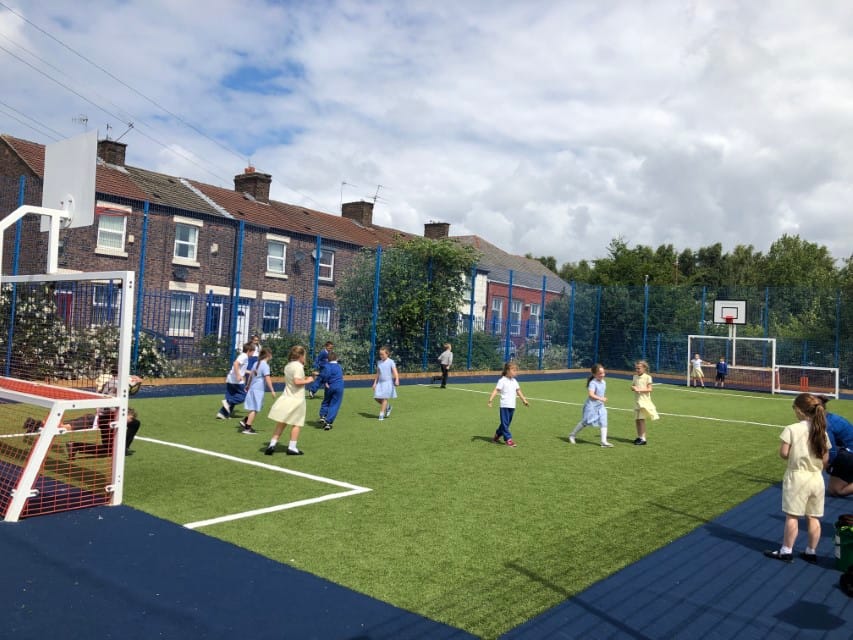
5. Magical Moving Stories
What to do: Read aloud (or make up!) a favourite imaginative story where children act out physical actions - ‘Going on a Bear Hunt’ immediately springs to mind but there are many more! For example, “We’re in the jungle” might include ‘crawling under vines’, ‘leaping over logs’, and ‘swinging like monkeys’.
You can do this with children seated or standing on the floor using their arms and legs to make imaginary movements, or using playground equipment such as Trim Trails or log and rope Play Frames that support different types of body movement.
Why it’s inclusive: There are no wrong moves! Children can interpret actions in any way that suits their body and their imagination. This is perfect physical play for younger pupils, children with lower confidence, or those developing motor skills.
Extension: Let children invent their own stories to act out, or add to yours. This boosts imaginative thinking, creativity and ownership.
6. Walking Talking Trails
What to do: Establish a walking trail around the school playground - you could use coloured cones to mark out the route, or stick numbers to selected zones or pieces of equipment, or draw a map of the playground with a trail route marked in coloured pen (children can help to plan and prepare this)!
Encourage pairs to walk the trail together while answering simple get-to-know-you questions, such as:
- What’s your favourite animal?
- Can you show me your best silly dance?
- What would you put in a magic lunchbox?
Why it’s inclusive: Encourages low-pressure social interaction and developing language and communication through gentle physical activity. It’s ideal for quieter children or those who find group games overwhelming. Make the course as long and large as you like, or restrict it to a smaller zone for much younger children (walking and climbing around this Sensory Seating Circle would be an ideal spot for them).
7. Construction Challenges
What to do: Construction play is perfect for developing fine motor skills, as well as providing opportunities for improving hand-eye coordination, and some gross motor development working with heavier items. It’s also a great way for children to have fun getting imaginative and creative through physical play, bringing their ideas to life!
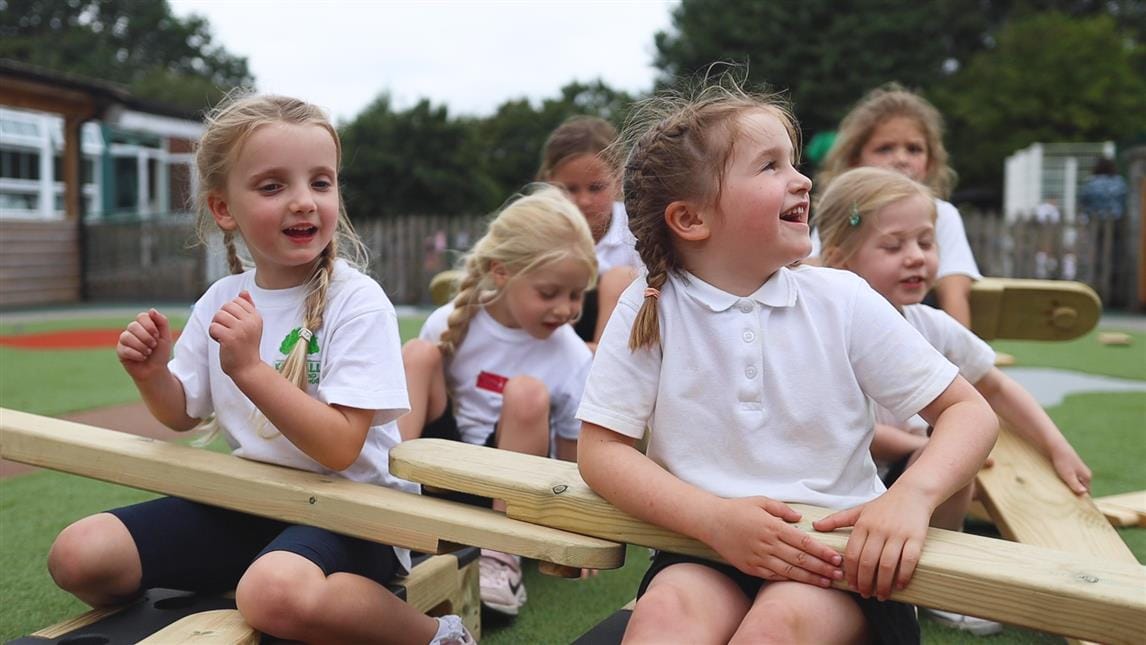
Set up a construction zone/construction table with their choice of building resources - bricks and blocks, cardboard boxes or other items from home. Set children small challenges, either in pairs or small groups, e.g. to build a tall tower or a sturdy bridge or a trail to follow.
Why it’s inclusive: Building together encourages cooperation over competition. Children learn to support each other, and it’s a great way to mix abilities and promote empathy.
See: Construction Play
Establishing the Right Environment
In addition to offering the right activities, it’s worth implementing these simple broader ideas to make physical play effortlessly inclusive:
- Use Inclusive Language: Avoid using phrases or concepts like "boys vs girls" or “you need to be fast to do this” that can alienate children.
- Keep Flexible Rules: Keep a few alternative adaptations to games in mind, so you can be flexible and switch things up on the spot depending on who’s playing.
- Get Feedback: Regularly ask children what games they enjoy and if they feel included - they learn that their ideas and opinions are important and they can provide some of the best inspiration for fresh ideas too.
Making physical play inclusive doesn’t require making difficult changes to how things are done already - it’s about being flexible and adaptable with what we do, using a little creativity, and always maintaining a strong sense of empathy.
By offering a range of adaptable activities, and using inclusive language and attitudes to foster a culture of belonging, schools can ensure that every child - regardless of ability or background - can unfailingly experience the fun, connection, growth and development that comes from active play.
Can we help you? As the UK’s Number 1 School Playground Equipment Specialist, we have over 25 years of expertise in designing and building incredible inclusive playgrounds for schools and nurseries across the country.
If you’d like to transform your school playground or nursery garden into a wholly inclusive, fun-filled play and learning environment, please do Contact Us to arrange a free, no-obligation consultation!
